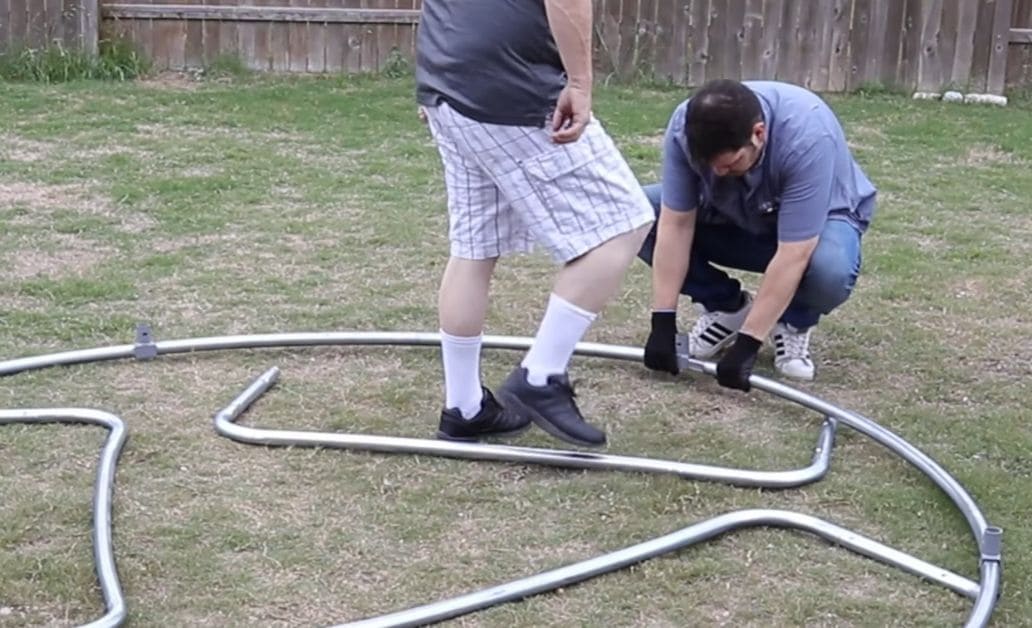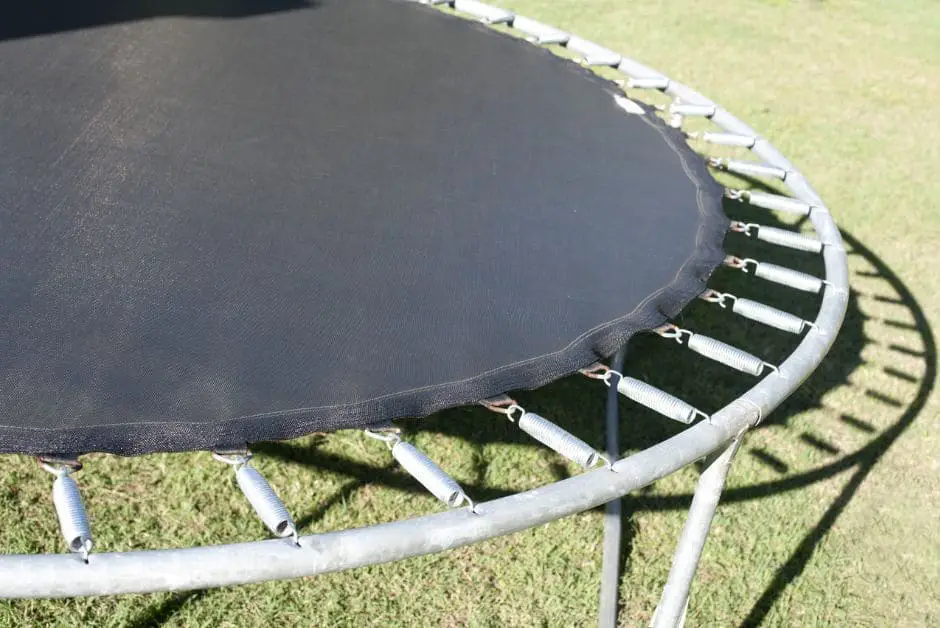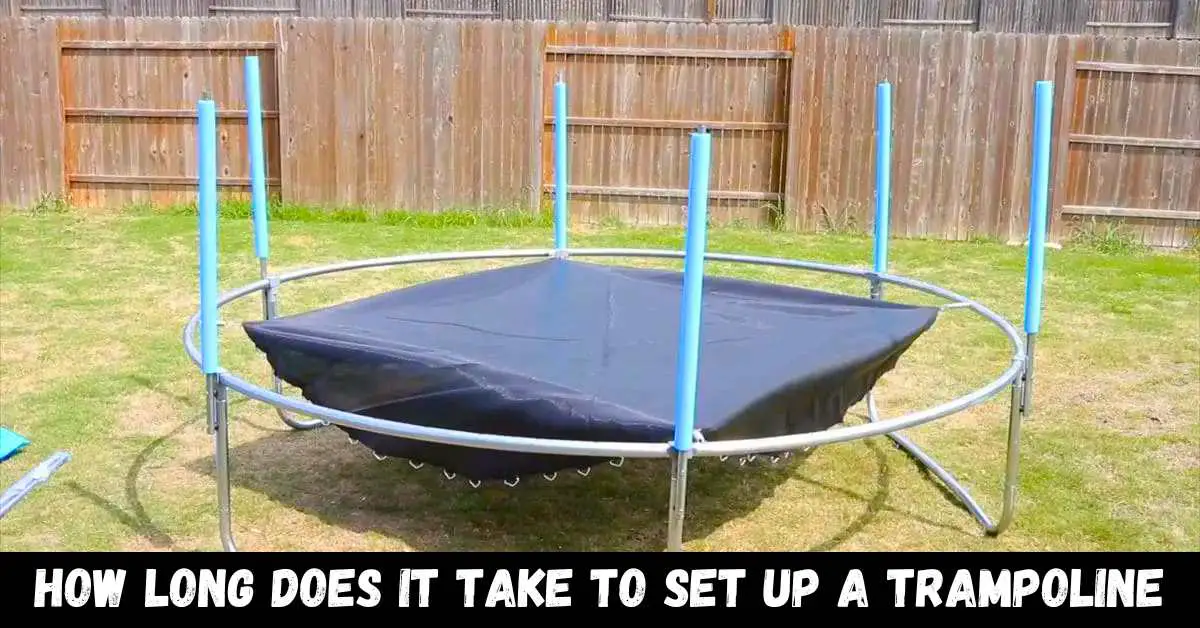Trampolines are a popular outdoor recreational activity enjoyed by children and adults alike. They provide an excellent way to exercise, have fun, and spend quality time with family and friends. However, before jumping, you need to set up the trampoline.
The time it takes to set up a trampoline can vary based on the size and complexity of the trampoline, as well as your experience with assembling it.
This article will discuss how long it typically takes to set up a trampoline and provide some tips to make the process easier.
We will also look at some of the factors that can affect the assembly time, such as the type of trampoline, the number of people involved in the assembly, and the tools required.
By the end of this article, you will have a better idea of how long it takes to set up a trampoline, and you will be better prepared to tackle the job yourself.
How long does it take to set up a trampoline: Setting up a trampoline typically takes 1-2 hours, but can vary based on size and experience. Following instructions carefully ensures a safe and efficient assembly process.
How long does it take to set up a trampoline?

Setting up a trampoline can be a fun and exciting activity, but how long does it take? Well, that depends on several factors, such as the size of the trampoline, the complexity of its design, and the skill level of the person putting it together.
For smaller trampolines, it can take as little as 30 minutes to set up, while larger and more complex models could take several hours.
Additionally, experience can affect how long it takes to set up a trampoline. Someone who has put together many trampolines before may be able to do it quicker than someone who is doing it for the first time.
However, no matter how long it takes, it’s important to follow the manufacturer’s instructions carefully to ensure the trampoline is set up safely and correctly.
Factors Affecting Trampoline Assembly Time
Trampolines are a popular outdoor recreational activity for kids and adults alike. However, assembling a trampoline can be a daunting task for many individuals.
One of the most common questions asked by people before purchasing a trampoline is, “How long does it take to set up a trampoline?” The answer to this question depends on several factors.
We will discuss the four main factors that affect trampoline assembly time.
Trampoline Size and Shape:
The size and shape of a trampoline is the primary factor affecting assembly time. Small round trampolines with a diameter of 8-10 feet can be assembled in a couple of hours, while large rectangular trampolines with a size of 17-20 feet can take up to 8 hours to assemble.
Additionally, the shape of the trampoline also plays a role in assembly time. Round trampolines are easier to assemble than rectangular trampolines as they have fewer parts and are less complex.
Assembly Difficulty Level:
The second factor that affects trampoline assembly time is the level of difficulty involved in assembling the trampoline. Some trampolines are easier to assemble than others, and this can impact the time it takes to put them together.
Trampolines with simple designs, such as those with a minimal number of components or those that do not require any special tools, can be assembled in a shorter amount of time.
On the other hand, trampolines that are more complex, such as those with more components or those that require specialized tools, may take longer to assemble.
Number of People Helping:

The number of people helping with the assembly process can also affect the time it takes to set up a trampoline. Assembling a trampoline alone can take longer, as one person has to maneuver and hold the parts in place while trying to connect them.
On the other hand, having more people to help can make the process faster and easier, as they can hold the parts in place while others connect them.
The ideal number of people required for assembling a trampoline depends on the size and complexity of the trampoline. As a general rule, larger trampolines require more people to assemble them.
Tools Required:
The fourth and final factor affecting trampoline assembly time is the tools required for assembly. Some trampolines require specialized tools, while others do not. The availability of the tools required can impact the time it takes to set up a trampoline.
If the tools required are not readily available, then it may take longer to assemble the trampoline as you may have to purchase or borrow the required tools.
On the other hand, if the tools required are readily available, then the assembly process may be faster and easier.
Preparation Steps Before Assembly
Assembling a trampoline can be a fun and rewarding experience, but it is essential to take the necessary preparation steps to ensure that the assembly process is safe and efficient.
Proper preparation is critical to avoid accidents, injuries, or damage to the trampoline.
We will discuss the four preparation steps you should take before assembling a trampoline.
Choosing the Right Location:
The first preparation step before assembling a trampoline is choosing the right location. The location should be flat and level, and there should be enough space around the trampoline to allow for safe jumping.
Avoid placing the trampoline near trees, power lines, or other structures that may pose a safety hazard. Additionally, consider the weather conditions in your area, as the trampoline should be placed in an area that is sheltered from the wind and direct sunlight.
Clearing the Area:
The second preparation step before assembling a trampoline is clearing the area where the trampoline will be placed. Remove any obstacles or debris that may cause a safety hazard, such as rocks, branches, or sharp objects.
Ensure that the area is free from any potential tripping hazards, such as garden hoses or toys.
Checking for Hazards:
The third preparation step before assembling a trampoline is checking for any potential hazards that may affect the safety of the trampoline. Look for hazards such as uneven ground, soft ground, or nearby bodies of water that may pose a safety risk.
Ensure that the trampoline is placed in an area with proper drainage, as standing water may cause the trampoline to become unstable.
Laying Out All the Parts and Tools:
The fourth and final preparation step before assembling a trampoline is laying out all the parts and tools required for assembly. Before starting assembly, ensure that all the parts are included in the package and there are no missing or damaged parts.
Review the instruction manual carefully to ensure that you have all the necessary tools required for assembly, such as wrenches or screwdrivers. Organize all the parts and tools in a way that is easily accessible during assembly.
Trampoline Assembly Steps
Assembling a trampoline can be a daunting task, but with proper preparation and guidance, it can be done safely and efficiently. In this article, we will discuss step-by-step instructions for trampoline assembly, along with tips and tricks to make the process smoother and common mistakes to avoid.
Step-by-Step Instructions for Trampoline Assembly:
Lay Out the Parts: The first step is to lay out all the parts on the ground in the order of assembly. Make sure that all the parts are present and accounted for.
Attach the Legs: Attach the legs to the frame of the trampoline, making sure that they are secure and tightened properly.
Attach the Springs: Begin attaching the springs to the frame of the trampoline, one by one, ensuring that they are properly attached and in the right position.
Attach the Jumping Mat: Once all the springs are attached, attach the jumping mat to the springs. Start with one end of the mat and work your way around, attaching the mat to each spring.
Install the Enclosure: If your trampoline has an enclosure, attach it next. Make sure that the enclosure is properly aligned and tightened so that it is secure and safe to use.
Install the Padding: Finally, install the padding around the frame of the trampoline to protect jumpers from injury.
Tips and Tricks for Assembly:

Read the Manual: Before starting the assembly process, read the manual carefully so that you understand the instructions and can avoid mistakes.
Use Proper Tools: Make sure to use the right tools for the job, including a screwdriver, pliers, and a rubber mallet. Using the wrong tools can damage the trampoline and make assembly more difficult.
Work with a Partner: Trampoline assembly is a two-person job. Working with a partner can make the process faster and safer.
Keep the Parts Organized: Keep the parts organized and labeled so that you can easily find the parts you need during assembly.
Take Breaks: Trampoline assembly can be tiring and time-consuming. Take breaks as needed to avoid fatigue and ensure that you are working safely and effectively.
Common Mistakes to Avoid During Assembly:
Skipping Steps: Skipping steps in the assembly process can result in an unsafe trampoline that is prone to tipping over or causing injury.
Over-tightening the Springs: Over-tightening the springs can cause the trampoline to become too rigid, making it unsafe for jumping.
Installing the Enclosure Incorrectly: Incorrectly installing the enclosure can result in a safety hazard, as jumpers may become trapped in the enclosure or fall out of the trampoline.
Not Following Weight Limits: Not following the weight limits of the trampoline can result in injury or damage to the trampoline.
Ignoring Safety Precautions: Ignoring safety precautions, such as wearing shoes while assembling the trampoline or jumping on the trampoline without adult supervision, can result in serious injury or even death.
Time Estimates for Different Trampoline Models
Assembling a trampoline can take a considerable amount of time, depending on the size and shape of the trampoline, as well as the difficulty level of the assembly process.
We will provide time estimates for different trampoline models based on their size and shape to help you plan for the assembly process.
Time Estimates for Small Round Trampolines:
Small round trampolines, with a diameter of 8-10 feet, are the easiest and quickest to assemble, typically taking 1-2 hours to complete.
These trampolines usually come with fewer parts and a simpler assembly process, making them ideal for those who are new to trampoline assembly.
Time Estimates for Large Round Trampolines:
Large round trampolines, with a 12-16 feet diameter, are more challenging to assemble than small round trampolines and can take up to 3-4 hours to complete.
These trampolines have more parts and a more complex assembly process, requiring additional time and effort to complete.
Time Estimates for Rectangular Trampolines:
Rectangular trampolines are the most challenging and time-consuming trampolines to assemble, with an estimated assembly time of 4-6 hours.
These trampolines have a more complex frame design and require a higher number of springs, which can make the assembly process more challenging.
Factors that can impact the assembly time of a trampoline include the number of people assisting with the assembly, their experience level, and the tools required for the assembly process.
Generally, having more people assisting with the assembly can make the process quicker, as they can help with holding and positioning the trampoline parts while they are being assembled.
Additionally, having the right tools on hand, such as a rubber mallet, a T-hook tool, and pliers, can make the assembly process more manageable and efficient.
Having experience with trampoline assembly can also help reduce the time required to assemble the trampoline, as the assembler will be more familiar with the process and can identify and troubleshoot potential issues more quickly.
FAQs About How long does it take to set up a trampoline
Q.1 Can I assemble a trampoline by myself, or do I need help?
While it is possible to assemble a trampoline by yourself, it is recommended to have at least one other person to assist you, especially for larger trampolines. This can make the assembly process easier and safer.
Q.2 How long does it take to assemble a trampoline?
Assembly time can vary depending on the size and complexity of the trampoline, as well as the experience level of the assemblers. Small trampolines can take 1-2 hours, while larger trampolines can take 3-4 hours or more.
Q.3 What tools do I need to assemble a trampoline?
The tools required for trampoline assembly can vary depending on the model but typically include a rubber mallet, pliers, and a T-hook tool. Refer to the manufacturer’s instructions for a complete list of required tools.
Q.4 How much should I pay someone to assemble a trampoline for me?
The cost of trampoline assembly can vary depending on your location and the complexity of the assembly process. You can expect to pay anywhere from $100 to $300 or more for professional trampoline assembly.
Q.5 What is the weight limit for a trampoline?
The weight limit for a trampoline can vary depending on the model but typically ranges from 200-400 pounds. Refer to the manufacturer’s instructions for specific weight limit information.
Q.6 Can adults use trampolines?
Yes, adults can use trampolines. However, it is important to follow all safety guidelines and avoid performing dangerous stunts or flips that can result in injury.
Q.7 How many people can safely use a trampoline at once?
The number of people who can safely use a trampoline at once depends on its size and weight limit. As a general rule, it is recommended to limit trampoline use to one person at a time to reduce the risk of injury.
Conclusion
In conclusion, setting up a trampoline can be a fun activity, but it’s important to take into consideration various factors that can affect the assembly time.
The size and shape of the trampoline, its difficulty level, the number of people helping, and the tools required can all have an impact on the time it takes to assemble.
It’s also important to take preparation steps before assembly, such as choosing the right location, clearing the area, and checking for hazards.
Following step-by-step instructions and tips can make the assembly process smoother and quicker while avoiding common mistakes.
Time estimates for different trampoline models can range from 30 minutes for small round trampolines to several hours for larger rectangular models.
With proper planning and execution, setting up a trampoline can be a satisfying and rewarding experience for everyone involved.
We hope this guide has helped you understand how long it takes to set up a trampoline. If you have any questions, please feel free to ask in the comments section below!

